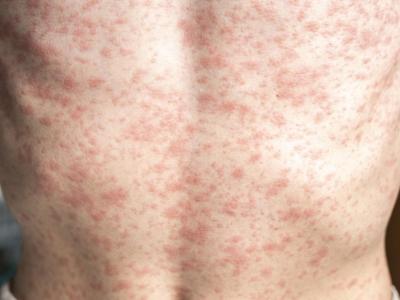Four new MERS cases reported in Saudi Arabia
Yesterday and today the Saudi Arabian Ministry of Health (MOH) announced four new cases of MERS-CoV in different cities across the country, including one involving a health worker.
Yesterday the MOH said two people were diagnosed as having MERS-CoV (Middle East respiratory syndrome coronavirus) likely transmitted through direct contact with camels, a known risk factor for the virus. A 60-year-old Saudi woman from Buraydah is in critical condition, as is a 69-year-old Saudi man from Najran. Also reported yesterday was the death of a previously announced 60-year-old man from Riyadh who had MERS.
Today the MOH noted two new cases. A 32-year-old Saudi man from Mulayjah is in stable condition after being diagnosed as having the coronavirus. The man's source of infection is listed as "primary," meaning it's unlikely he contracted the virus from another person.
A 37-year-old expatriate from Riyadh was also diagnosed with MERS-CoV. She is in stable condition and acquired her infection as a healthcare worker.
The latest reports lift Saudi Arabia's total since the virus was first detected in humans in 2012 to 1,769, which includes 716 deaths. Nine people are currently being treated for their infections.
Jan 8 MOH report
Jan 9 MOH report
Three deaths reported in suspected VHF cluster in South Sudan
Health officials in South Sudan are investigating a suspected viral hemorrhagic fever (VHF) cluster involving three people from the same village, all of whom died from their infections, the World Health Organization (WHO) regional office for Africa said in its weekly health emergencies report.
The village is in Eastern Lakes state, located in the central part of South Sudan. The index patient is a 30-year-old pregnant woman who became ill on Dec 7 with symptoms such as fever, headache, neck pain, and sudden nose, gum, and injection-site bleeding. The second case-patient is a 13-year-old girl from the same village whose symptoms began on Dec 20, and the third is a 15-year-old boy who got sick on Dec 24.
The preliminary investigation by the health ministry, the WHO, and other health partners found that, although the patients were linked by time and place, they had no physical contact or notable travel histories. No samples were obtained after the patients died, and their burials weren't supervised. Sixty close contacts have been identified for monitoring, and so far none have shown symptoms.
As part of the probe, investigators have found some evidence of hemorrhagic disease in animals, including goats, sheep, and a cow. Wild-bird deaths were also reported in the area around the time the illness cluster was detected.
National and state rapid response teams have been sent to the area, and animal health officials are conducting investigation and containment measures. The WHO warned that the suspected VHF outbreak in South Sudan could rapidly evolve, and critical information, including lab confirmation, is needed to guide the response. It added that strengthened surveillance and clinical response capacity are needed in the area.
Jan 8 WHO Africa office report
WHO: Flu, mainly H3N2 and flu B, still rising in many parts of the world
Flu activity is still on the rise in Northern Hemisphere countries, with H3N2 and influenza B making up most of the detections, but some countries are reporting 2009 H1N1 activity, the WHO said yesterday in its latest global flu update.
In Europe, the flu increase has been sharp in some countries, with influenza B frequently found, while the main influenza A subtype varied by country and surveillance system type.
In North America, H3N2 is predominant.
West, East, and South Asian countries reported increased flu levels. In the Middle East, flu in Israel is mainly influenza B, while Jordan reported mainly the 2009 H1N1 strain. In East Asia, disease activity increased in both northern and southern China, led by the influenza B Yamagata lineage, followed by H3N2. South Korea also reported the same pattern. In South Asia, Iran reported increased activity from all three seasonal flu strains.
In northern Africa, activity rose in Egypt, Morocco, and Tunisia, much of it from 2009 H1N1. In the continent's western countries, flu showed signs of decline, with 2009 H1N1 the predominant strain in some locations such as Burkina Faso and Ivory Coast.
Globally, based on testing at flu labs through Dec 24, influenza A made up 65.2% of detections. Of subtyped influenza A viruses, 69.3% were H3N2 and 30.7% were 2009 H1N1.
Jan 8 WHO global flu update
Genetic study finds transmission clues in migrant MDR-TB cluster
An investigation into a cluster of multidrug-resistant tuberculosis (MDR-TB) infections in refugees entering European countries found that all originated in the Horn of Africa or Sudan and were linked to a Mycobacterium tuberculosis clone that came from Somalia or Djibouti. Researchers form the MDR-TB Cluster Consortium reported their findings yesterday in The Lancet Infectious Diseases.
In the spring of 2016, findings from Swiss and German labs regarding four MDR-TB cases triggered an outbreak investigation that led to the identification of 29 cases diagnosed in seven European countries. All patients had come from the Horn of Africa or Sudan. Travel routes were known for 22 patients, and analysis showed a clear spatiotemporal overlap. Genetic analysis of samples collected in the Horn of Africa before the outbreak showed they were related to the outbreak strain.
The team said MDR-TB transmission probably occurred en route before arrival in Europe and that a shared mutation they found is likely a drug resistance mutation (linked to capreomycin resistance) and phylogenetic marker, the first of its kind in M tuberculosis.
In a related commentary, two WHO experts wrote that the study sheds light on the importance of early TB detection and the usefulness of molecular epidemiology. They noted that Somalia is known to have one of the highest prevalences of MDR-TB, a result of poor TB management because of decades of war and political conflict.
Screening arriving migrants from high-incidence countries requires specific actions and follow-up, they said, but challenges include language barriers and fear of deportation—factors that call for a humane approach to migrants. "Although screening of migrant populations on arrival is vital, we believe it is equally important to ensure a continuum of care for those who are moving across borders," they wrote.
Also, they said whole-genome sequencing—coupled with research into a new vaccine and better point-of-care diagnostics—could play an important role in mapping transmission chains and conducting outbreak investigations, not only in migrants, but also in settings such as prisons and healthcare facilities.
Jan 8 Lancet Infect Dis abstract
Jan 8 Lancet Infect Dis commentary














